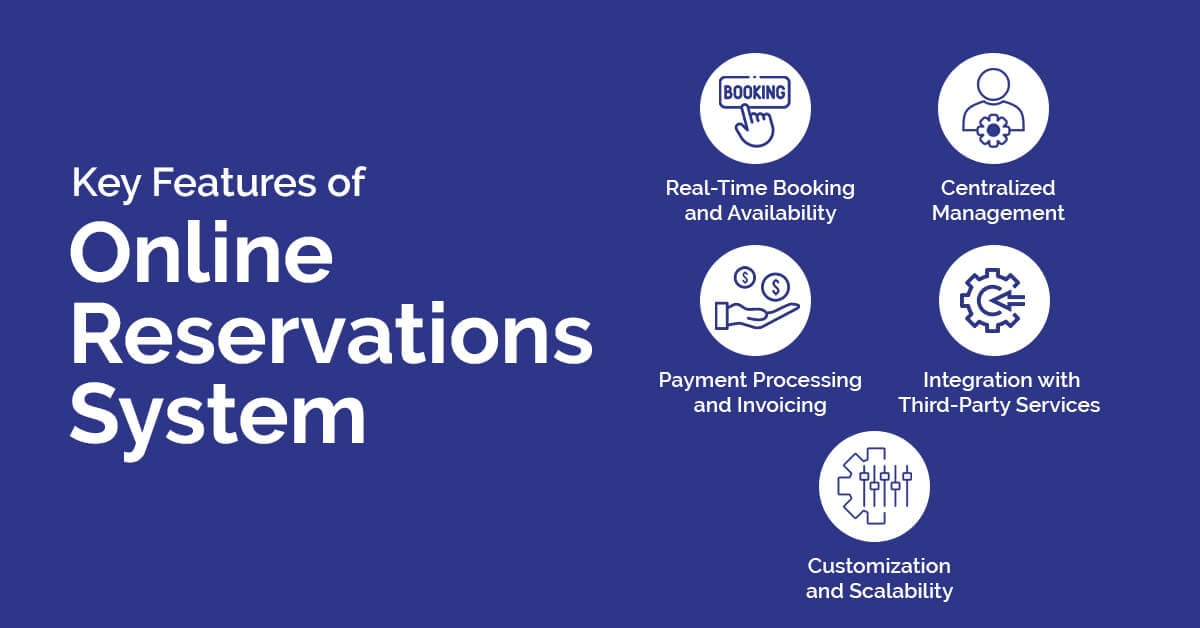
From Ledger to Algorithm: The Unseen Architecture of Modern Life – Tracing the Origins and Enduring Purpose of Reservation Systems
In an increasingly interconnected world, the act of reserving a spot – be it a flight, a dinner table, a hotel room, or a doctor’s appointment – has become an almost unconscious part of our daily lives. We take for granted the instantaneous confirmation, the precise allocation, and the seamless experience that underpins these transactions. Yet, beneath this veneer of digital simplicity lies a sophisticated and historically rich architecture: the reservation system. Far from a mere convenience, these systems represent a pivotal innovation, born from the demands of an expanding global economy, designed to manage complexity, optimize resources, and ultimately, connect individuals with desired experiences.
The story of reservation systems is not a singular tale but a tapestry woven through centuries of human enterprise, evolving from rudimentary manual methods to the hyper-sophisticated, AI-driven platforms of today. Its origins can be traced back to the most basic human need for order and allocation.
The Dawn of Allocation: Manual Beginnings
Before the advent of computers, reservations were a painstakingly manual affair. Inns along ancient trade routes would use chalkboards or ledgers to mark available rooms. Theatres in bustling cities would employ box office attendants who meticulously crossed off seats on a paper seating chart. Train travel, a revolutionary mode of transport in the 19th century, brought with it an unprecedented challenge in managing passenger flow. Clerks would juggle telegrams, phone calls, and physical tickets, often leading to confusion, overbookings, and disgruntled travelers. The system was prone to human error, limited by geographical distance, and inherently inefficient, particularly as the volume of bookings began to swell.
The core purpose, even in these early, analog days, was clear: to guarantee a service or a space to a specific individual at a specific time, thereby preventing double-booking and ensuring that resources were utilized efficiently. It was about creating order out of potential chaos, a promise of availability that built trust between provider and patron.

The Catalyst of Complexity: Air Travel and the Birth of the Digital Era
The true crucible for modern reservation systems emerged with the dawn of commercial aviation in the mid-20th century. Air travel, with its fixed capacity, perishable inventory (a flight seat cannot be sold once the plane departs), and complex routes, presented an unparalleled logistical nightmare for airlines. In the early 1950s, American Airlines alone was processing an astonishing 2,000 reservation calls per hour. Their system relied on a vast room of clerks, a complex network of pneumatic tubes, and a "lazy Susan" file containing thousands of index cards for each flight. A single booking could take up to 90 minutes to process. This manual approach was not only slow and error-prone but also a significant bottleneck to growth.
It was this immense pressure that led to a groundbreaking collaboration between American Airlines and IBM, culminating in the creation of SABRE (Semi-Automated Business Research Environment) in 1960. SABRE was the world’s first large-scale, real-time computerized reservation system. It revolutionized the industry by centralizing flight information, passenger data, and available seats, making it accessible instantly across a vast network.
SABRE’s impact was profound. It dramatically reduced booking times, virtually eliminated overbooking errors, and allowed airlines to manage their inventory with unprecedented precision. This marked the true birth of the digital reservation system, establishing its foundational purposes:
- Inventory Management: To accurately track and allocate available resources (seats, rooms, tables, appointments) in real-time.
- Overbooking Prevention: To ensure that a resource is not sold or promised to multiple parties simultaneously, maintaining operational integrity and customer trust.
- Efficiency and Speed: To automate and streamline the booking process, reducing manual labor, processing times, and associated costs.
- Customer Service Enhancement: To provide quick, accurate, and reliable booking confirmations, facilitating smoother travel and service experiences.
- Data Collection and Analysis: To gather valuable information on booking patterns, customer preferences, and demand fluctuations, enabling better forecasting and strategic decision-making.

From CRS to GDS: Expanding Horizons
The success of SABRE spurred other airlines to develop their own Computerized Reservation Systems (CRSs). However, as the airline industry grew, a new problem emerged: travel agents, who were becoming increasingly important, had to access multiple CRSs to find the best flights for their clients, a cumbersome and inefficient process. This led to the development of Global Distribution Systems (GDSs) in the 1980s.
GDSs like Amadeus, Galileo, Sabre, and Apollo consolidated flight information from multiple airlines, along with hotel rooms, car rentals, and other travel services, into a single, comprehensive platform. This allowed travel agents to search, compare, and book across a vast array of providers from one terminal. The purpose of the reservation system thus expanded beyond internal airline management to become a powerful inter-company network, facilitating complex global travel itineraries and empowering travel professionals.
The Internet Revolution: Democratizing Access
The advent of the internet in the 1990s and early 2000s ushered in the next major transformation. Online Travel Agencies (OTAs) like Expedia, Booking.com, and Priceline leveraged the power of the web to bring the GDS directly to the consumer. Suddenly, individuals could search, compare, and book their own travel with unprecedented ease, bypassing travel agents if they chose. This shift democratized access to reservation systems and fundamentally altered the travel industry landscape.
The internet’s influence extended beyond travel, giving rise to specialized reservation platforms for nearly every industry imaginable: OpenTable for restaurants, Ticketmaster for entertainment, Zocdoc for healthcare appointments, and countless proprietary systems for hotels, car rentals, and service providers. The core purposes remained, but they were now delivered with greater convenience, transparency, and often, lower transaction costs for the end-user.
Modern Purpose: Beyond Simple Booking
Today’s reservation systems are far more than just digital ledgers. They are sophisticated, interconnected ecosystems that serve multiple critical purposes:
- Revenue Management (Yield Management): This is perhaps one of the most financially impactful aspects. Reservation systems, armed with vast amounts of data, enable dynamic pricing. Airlines, hotels, and even ride-sharing services use algorithms to adjust prices in real-time based on demand, seasonality, competitor pricing, and booking patterns, maximizing revenue from a perishable inventory.
- Personalization: Modern systems leverage customer data to offer personalized recommendations, upgrades, and services, enhancing the overall customer experience and fostering loyalty. Think of an airline knowing your preferred seat or a hotel remembering your pillow preference.
- Data Analytics and Business Intelligence: Every booking, cancellation, and search query generates invaluable data. Reservation systems capture this, allowing businesses to analyze trends, forecast demand, identify peak periods, and optimize staffing and resource allocation. This data-driven insight is crucial for strategic planning.
- Operational Efficiency: Integration with other internal systems (e.g., property management systems for hotels, inventory management for restaurants) ensures seamless operations, from check-in to billing.
- Communication and Engagement: Automated confirmations, reminders, and post-service follow-ups are standard features, keeping customers informed and engaged throughout their journey.
- Flexibility and Scalability: Cloud-based reservation systems can handle immense transaction volumes and scale up or down as demand fluctuates, offering robust and reliable service globally.
Challenges and the Future
Despite their sophistication, modern reservation systems face ongoing challenges. Data security and privacy are paramount concerns, as these systems handle vast amounts of sensitive personal and financial information. Integration with diverse legacy systems and newer technologies can also be complex.
Looking ahead, the evolution continues. Artificial intelligence and machine learning are being integrated to offer predictive analytics, hyper-personalization, and even conversational booking interfaces. Blockchain technology holds promise for enhancing transparency and security in multi-party reservations. The future aims for even greater seamlessness, where bookings are not just transactions but integrated parts of an intelligent, anticipatory service ecosystem.
Conclusion
From the simple ledger book of an ancient innkeeper to the global neural networks processing billions of transactions per year, the reservation system has undergone an extraordinary metamorphosis. Its journey reflects the relentless human drive for efficiency, order, and connection. What began as a manual effort to prevent double-booking has evolved into an indispensable, intelligent architecture that underpins global commerce, shapes industries, and profoundly impacts our daily lives.
The enduring purpose remains steadfast: to allocate resources, manage demand, and provide certainty in a world of endless choices. Yet, its methods have transformed from laborious human intervention to instantaneous algorithmic precision. The reservation system is not merely a tool; it is the invisible hand that orchestrates our access to experiences, ensuring that when we seek a place, a moment, or a service, it is there, waiting for us. Its silent efficiency allows us to navigate the complexities of modern life with a comforting promise: "Your spot is reserved."


